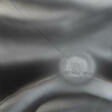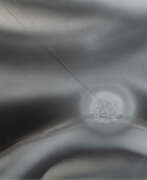ZERO

ZERO
The ZERO art movement, originating in Düsseldorf, Germany, in the late 1950s, was a significant avant-garde development in post-war European art. Founded by Heinz Mack and Otto Piene, and later joined by Günter Juecker in 1961, ZERO represented a departure from the subjective nature of contemporary art movements like French Art Informel and Tachisme. Instead, it focused on the materials of the artworks and the spaces they inhabit, emphasizing light, space, and viewer participation.
ZERO's innovative use of monochrome color was a deliberate choice to distinguish itself from expressionistic and abstract art. This focus on a single color heightened the emphasis on a work’s surface, its highlights, and shadows, while exploring the perception of light. For example, Yves Klein's exploration of blue aimed to transcend dimensions, while Piero Manzoni's preference for white sought to present a surface beyond pictorial phenomena.
The movement extended beyond Germany, involving artists from various countries and movements, including Arte Povera, Nouveau réalisme, Op Art, Minimalism, and Kinetic art. Notably, artists like Lucio Fontana, Yves Klein, and Piero Manzoni closely collaborated with ZERO. The movement was characterized by its emphasis on collaboration and participation, moving away from individualistic art production.
ZERO's historical significance lies in its radical approach to integrating art and science and its influence on subsequent artistic practices. The ZERO Foundation, established in 2008, continues to preserve and present the work of the international ZERO movement, playing a critical role in maintaining the legacy of this influential art movement.
This movement's experimental nature and innovative approaches make it a fascinating subject for collectors and experts in modern art. For those interested in learning more about ZERO, consider subscribing to updates on exhibitions, new research, and auctions related to the movement. This will provide a deeper understanding of ZERO's place in art history and its continued relevance in contemporary art.
| Country: | Belgium, France, Germany, Italy, Switzerland, The Netherlands |
|---|---|
| Start of the period: | 1957 |

